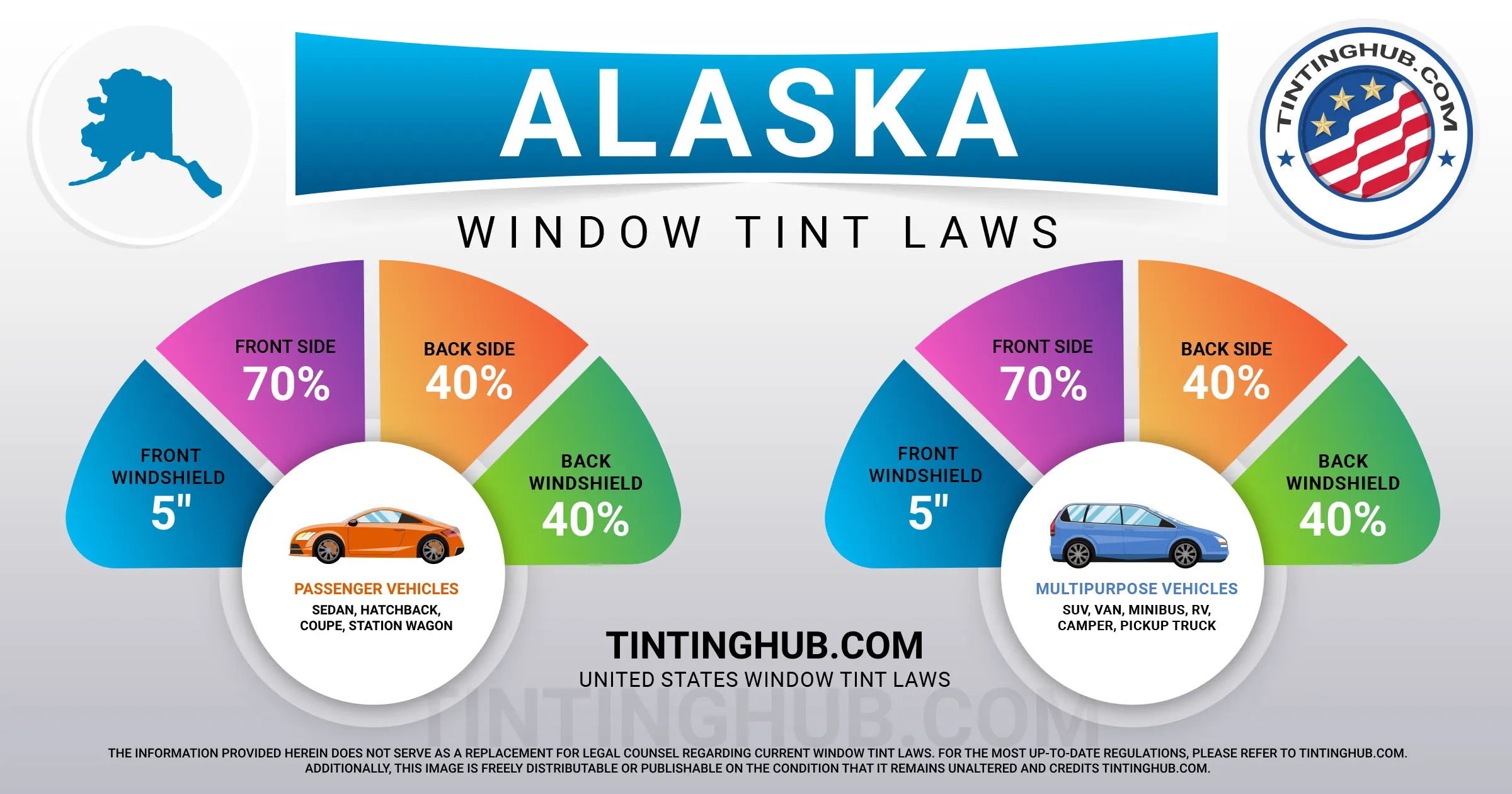Alaska Window Tint Laws (Last Update 2024)

When it comes to car window tinting laws in Alaska, it’s important to stay informed. These regulations, enacted in 1994, not only affect the aesthetics of your vehicle but also play a crucial role in ensuring safety on the road. In this guide, we’ll provide you with all the necessary information regarding Alaska’s car window tinting laws, including permissible tint darkness and reflection limits.

Understanding Window Tint Darkness
VLT (Visible Light Transmission) Percentage
We refer to the percentage of visible light allowed through your car windows as VLT, or Visible Light Transmission. In Alaska, there are varying VLT requirements for sedan cars and SUVs or vans.
Tint Darkness for Sedans
- Windshield: Non-reflective tint is permitted on the top 5 inches.
- Front Side Windows: Must allow more than 70% of light in.
- Back Side Windows: Must allow more than 40% of light in.
- Rear Window: Must allow more than 40% of light in.
Tint Darkness for SUVs and Vans
For SUVs and vans, the tint darkness requirements are identical to those for sedans:
- Windshield: Non-reflective tint is allowed on the top 5 inches.
- Front Side Windows: Must allow more than 70% of light in.
- Back Side Windows: Must allow more than 40% of light in.
- Rear Window: Must allow more than 40% of light in.
It’s important to note that Alaska allows a small window tint variance of up to 3%.
Understanding Window Tint Reflection
Window tint can do more than just add style to your vehicle; it can also reflect incoming light, reducing glare and heat. Alaska’s window tint laws include regulations for permissible tint reflection:
Tint Reflection for Sedans
- Front Side Windows: No metallic or mirrored appearance allowed.
- Back Side Windows: No metallic or mirrored appearance allowed.
Tint Reflection for SUVs and Vans
For SUVs and vans, the tint reflection rules are consistent with those for sedans:
- Front Side Windows: No metallic or mirrored appearance allowed.
- Back Side Windows: No metallic or mirrored appearance allowed.
Additional Alaska Window Tint Rules and Regulations
Alaska has several other important laws, rules, and regulations related to window tinting, which you should be aware of:
- Side Mirrors: There are no restrictions on side mirrors in the state of Alaska.
- Restricted Colors: Window tint colors permitted in Alaska include green, gray, bronze, and neutral smoke.
- Certificates: Film manufacturers are not required to certify the film they sell in this state.
- Stickers: No stickers are mandated by law to identify legal tinting.
- Medical Exceptions: Alaska allows medical exemptions for drivers or passengers who frequently travel in the vehicle. These exemptions must be renewed annually by an Alaska-licensed physician.
- Penalties: Violating these tinting laws may result in fines of up to $300 and a $10 surcharge if the issue is not rectified within the specified time.
Local Interpretations
Keep in mind that your county or place of residence may interpret Alaska’s tinting laws and regulations differently.
Therefore, we always recommend double-checking this information with your local DMV or law enforcement authorities to ensure compliance.
Stay Updated
We last updated our information about window tint laws in Alaska in 2023. If you come across any outdated or incorrect information, please don’t hesitate to contact us. We’re committed to providing accurate and up-to-date information to help you navigate Alaska’s window tinting laws.
As a trusted industry leader, we take pride in delivering precise and reliable information about window tint laws to keep you informed and compliant.